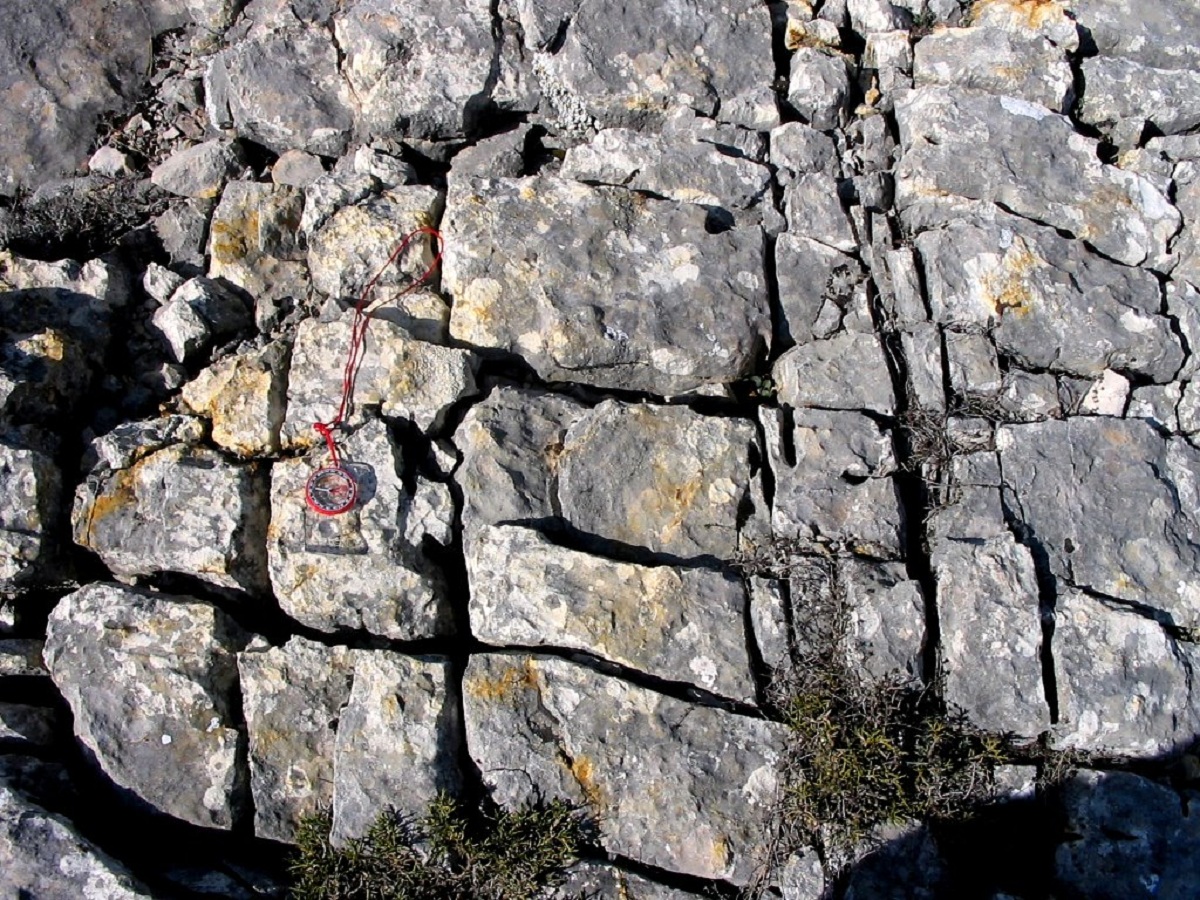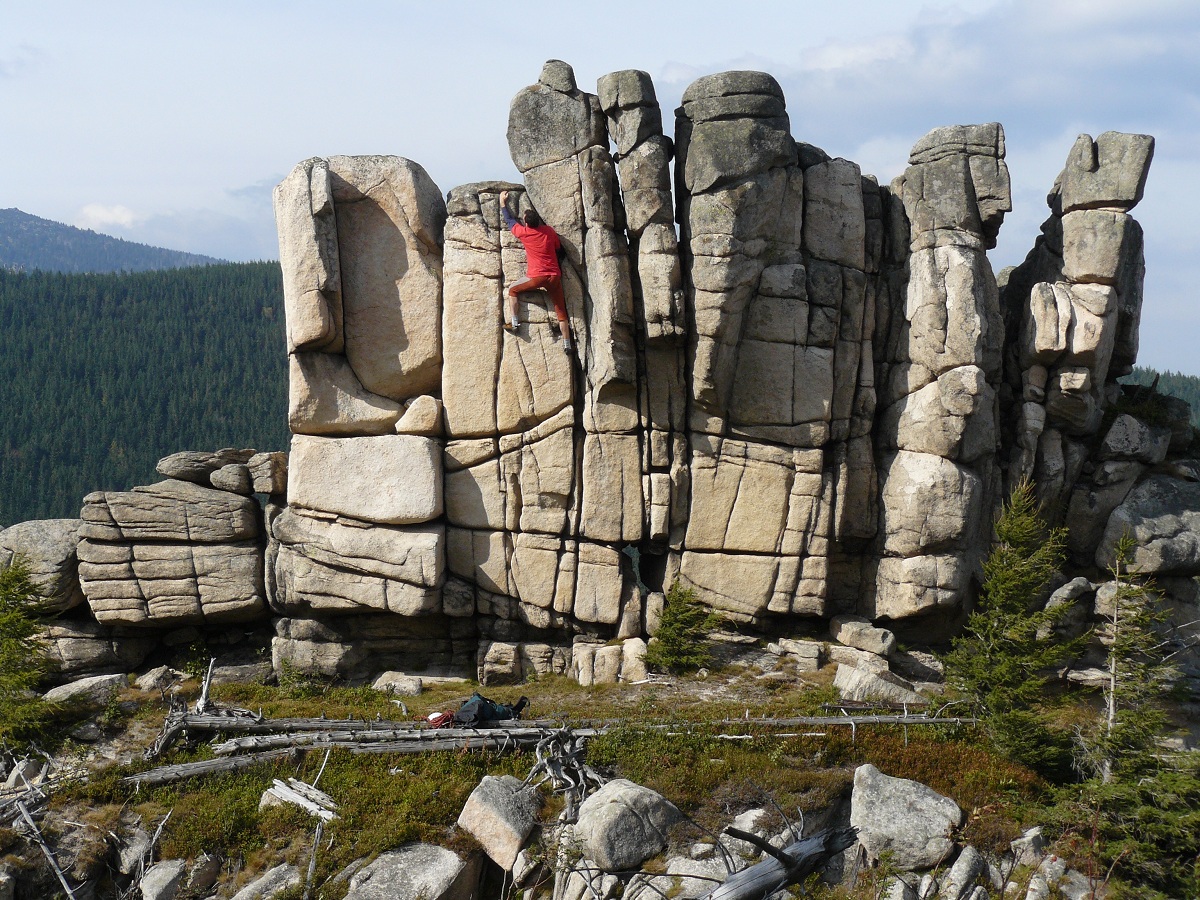
All the cleats They are fractures in the rocks that are not usually accompanied by landslides of which it is rock that determines. The most normal thing is that there is a minimum transverse separation. They are usually distinguished from faults that are fractures in which we can find slippage of the blocks. Joints are fragile deformation structures of rocks that are quite abundant in nature.
Therefore, we are going to dedicate this article to tell you everything you need to know about cleats, their formation and characteristics.
Key features
Like other geological structures, the direction of the joints is described by two parameters:
- Address: The angle formed by the horizontal line contained in the articulation plane and the north-south axis.
- Dip: the angle formed by the joint and the imaginary horizontal plane.
Joints do not have to be generally flat, nor do they have to respond to any regular geometric shape, so the indicated parameters may vary from one point to another. Joints are not usually isolated, but related to faults and bends. Normally, when there are two or more sets of joints, we call it the articular system or "joint system."
The simplest are:
- Parallel cleat system: all joints have the same direction and inclination.
- Joint system that is cut: cleats have different directions and angles, so they cut at certain points. The most common case is usually a family of conjugated joints, where two or three main joint directions are produced by the same structural phenomenon (deformation or compression).
To distinguish between compression joints and distension joints, it is necessary to study the main axis of local or regional deformation, because the joint itself cannot provide enough information (groove or displacement). In the case of expansion joints, the direction of the most prominent family is usually perpendicular to the direction of expansion, whereas in compression joints, it is the direction of the acute bisector that intersects the joint.
Joint Mechanisms
There are many reasons why they can form, including directional forces, such as forces that cause ground faults or creases. One of the most common reasons for bonding is a decrease in the volume of the material (increased density), which in turn can occur for different reasons:
- Dehydration, as sediment that remains in the air after submerging.
- Refrigeration, like basalt colonnades. They are formed by a basalt flow, once the lava solidifies, the basalt flow splits into prisms (columnar separation) through subsequent cooling. The Giant's Causeway in Ireland, or Los Órganos de La Gomera, are some of the many well-known examples of this case.
- Recrystallization. The passage of time favors, in geological materials, a rearrangement of the molecules that together widens the extension of the crystalline networks, increasing the density of the material, which is compensated, as in the previous cases, with the formation of cracks.
- Decompression. It is another important cause of jointing, like the one that affects a granite pluto that erosion reveals. This is how the formations that in the Center of Spain are called ber mooes or berrocales originate.
Importance of cleats
Cleats are important because they generally control the drainage pattern and shape of the shoreline, and they also provide a path for water to penetrate deep into the rock mass, thus promoting erosion. Jointed rocks are permeable to fluids, so they can be used as aquifers or rock-oil or gas storage quarries and miners pay close attention to the connection, since their presence or absence in a certain direction can advance or delay your work.
To distinguish between compression and tension cleats, the main axis of local or regional deformation should be studied, because the cleat itself cannot provide enough information (groove or offset). In the case of expansion, the direction of the most prominent family is usually perpendicular to the direction of expansion, while in compression, it is the direction of the acute bisector that crosses the joint.
Training
- Expansion. These are caused by the stress system acting on the rock massif, which is the result of cooling (in igneous rocks. Columnar structure) or drying (in sedimentary rocks).
- Decompression. The stud system can develop more or less parallel to the surface, especially in igneous rock intrusions, such as granite.
- They can be caused by discharges in the rocky massif when the overburden is eroded.
- Tectonics: originate as a direct result of folds or thrusts in the rock, and generally accept three systems: bearing, parallel to the axis of the fold; inclination system, perpendicular to the cleats, and a conjugate system of oblique cleats appear well below 45 ° in the direction of structural migration. In some cases, the two groups that make up the conjugate system develop unevenly. In these systems the term "shear joint" has been used, which corresponds approximately to the theoretical direction of maximum shear.
Differences with failures
Geological faults can be defined as generally flat cracks that are observed in a part of the earth's crust and have a certain displacement wide enough to be observed with the naked eye or from the air. The width of the faults can vary from a few centimeters to several kilometers, and can span hundreds of meters from each other, like the San Andreas Fault in California, USA Fault movement is crucial to the formation of mountain systems. The fault that separates the land is two blocks, one displaced with respect to the other.
In this case we see that the cleats they are only the fracture in assists the sliding that occurs when the faults are generated caused by earthquakes or by the presence of some edges of the tectonic plates.
I hope that with this information you can learn more about cleats and their characteristics.


